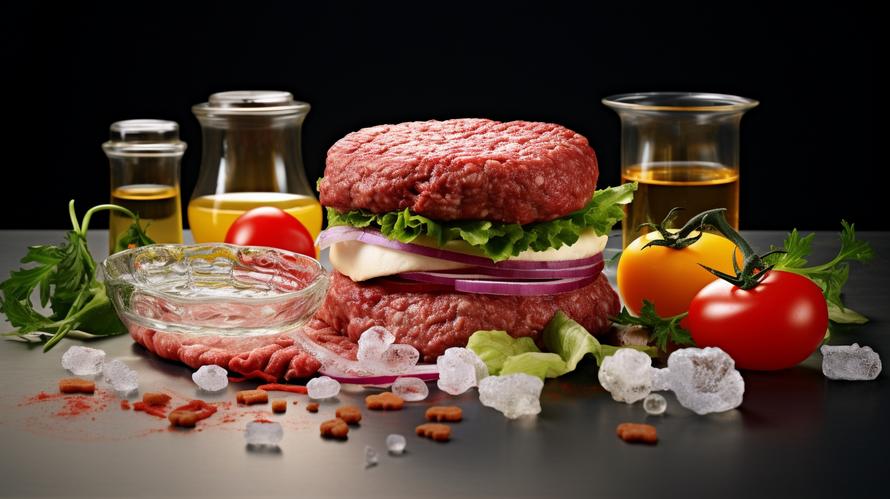You may be familiar with the famous fast-food commercial questioning, “Where’s the beef?” Yet a more crucial question is, “What’s in the beef?” Knowing the chemicals and pathogens commonly found in meat is essential for maintaining your health, as the contents inside that bun can have significant consequences for your well-being.
Beef recalls are becoming a seemingly constant occurrence in the news, and an outbreak of Salmonella in ground beef sold in a Maine grocery store chain earlier this year exemplifies the issue. As a result of insufficient recalls, 14 people across multiple states fell ill, and seven required hospitalization.
The Antibiotic Problem
As a previous bookkeeper for a large beef boning facility, I have witnessed numerous incidents that allowed microorganisms to breed in meat sold to customers. Livestock’s consumption of antibiotics intended to increase weight gain exacerbates the issue. An unintended side effect of these antibiotics is that they promote the growth of antibiotic-resistant “superbugs.” Infections caused by superbugs can be deadly if no antibiotic can be found to control the spread.
Antibiotics permitted for use in food animals include bacitracin, bambermycins, chlortetracycline, lasalocid, lincomycin, monensin, penicillin, salinomycin, tylosin, and virginiamycin. Realizing the consequences of using these antibiotics, the U.S. Food and Drug Administration Center for Veterinary Medicine issued an order prohibiting specific extra-label applications of the cephalosporin class of antimicrobial drugs for most food-producing animals such as cattle, pigs, chickens, and turkeys. This precautionary measure aims to prevent the development of cephalosporin-resistant strains of certain bacterial pathogens, which can cause pneumonia, skin and tissue infections, and pelvic inflammatory diseases.
Steroids and Other Drugs
Often, animals are given veterinary steroids such as Finaplix (Trenbolone acetate) to promote weight gain in the weeks leading up to slaughter. However, when residues of these substances remain in the livestock, they can be present in the meat from these animals, causing consumers to unknowingly ingest steroids with each meal. Similarly, pigs and chickens receive rounds of various antibiotics to induce growth, though this has also resulted in the development of antibiotic-resistant bacteria.
Additionally, chicken feed may contain arsenic and copper to boost the production of poultry meat. Although safer alternatives like acidifiers, enzymes, oligosaccharides, and directly fed probiotics can increase animal size, these methods still pose dangers to human health; for example, supplying cattle oligosaccharides can increase E. coli growth in cows.
Natural Design
Nature designed cattle and hoofed animals to be grass-fed browsers. However, meat producers have altered these animals’ diets to be corn and soy-based, incorporating antibiotics and other drugs. This process is likely responsible for inducing allergy-producing reactions within the animals’ digestive tracts.
Moreover, when these animals consume glysophate residues from GMO soy and Bacillus thuringiensis from bt-corn (a form of GMO corn), these chemicals likely interfere with the animals’ ability to produce prebiotics. The absence of prebiotics, which are natural substances that promote beneficial bacteria in the large intestine, allows for harmful bacteria reproduction in animals and the subsequent presence of E. coli in contemporary beef.
Our meat producers have excessively intervened with nature’s original design of the animals we consume.
Taking Action
As consumers, you can purchase organic meats from animals raised without the use of hormones and antibiotics. Organic milk and cheese come from cows that have not been injected daily with the milk-producing recombinant bovine growth hormone, rBGH. Lamb is relatively free of chemical residues, particularly Icelandic or New Zealand lamb.
Organic beef comes from pasture-raised or organically grass-fed cows. Many farmers practice sustainable agriculture methods to bring delicious and healthful meat to your table. Searching the internet for “pasture-raised beef brand names” will yield various palatable options.
Additionally, consider talking with supermarket managers encouraging them to carry grass-fed meat products. As a consumer, your purchasing choices make a difference in how food is produced. By focusing on “what’s in the beef,” the answer to this all-important question may eventually be more reassuring than alarming.



